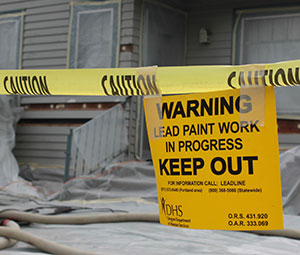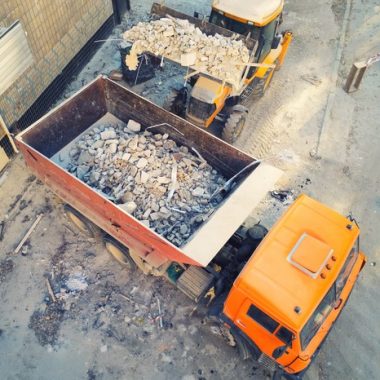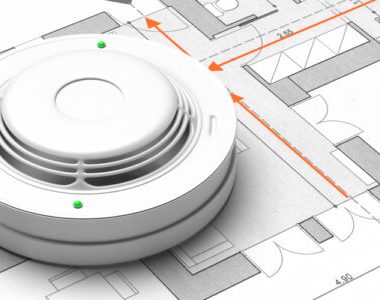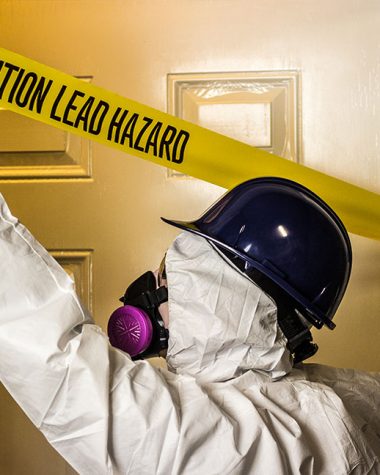This should not be a real conclusion, rather the blog post should end with a rhetorical questions.
Understanding Lead Paint Regulations for Renovations
When it comes to renovations, you might find yourself needing to understand lead paint regulations. More often than not, this involves dealing with a range of hazardous materials and getting the proper permits and paperwork before you can begin. Whether you’re renovating an old home or converting a commercial building, knowing the regulations pertaining to lead paint is a must.
What Is Lead Paint?
Lead paint, or lead-based paint, is any paint that contains heavy metals, including lead. It was used in many homes and on buildings until the 1970s, when lead poisoning became a serious health concern in the United States and other countries. Lead paint is now banned and must be removed before any renovations can begin.
Lead Paint Regulations You Need to Know
The most important lead paint regulations you need to know for any renovation are:
1) Lead Assessment Tests
If you’re looking to renovate a home built before 1978 – the year lead paint was banned – then you’ll need to get it assessed for lead paint. Original lead-based paint can be found in homes built before this date, so it’s best to get the assessment done as soon as possible. Consistent exposure to lead paint can lead to serious health issues in both adults and children.
2) Hazard Reduction Measurements
If your renovation does contain lead-based paint, you have to take the necessary steps to reduce the hazard. This can include applying specialized coatings and sealing, as well as disposing of the lead-based paint in a safe, legal manner.
3) Training for Contractors
In most cases, regulations require contractors working on renovations to go through lead-safe training as part of their protection. This will help make sure they understand how to handle lead-based paint and other hazardous materials while on the job. Contractors will need to get adequate certification and permits that ensure they’re up-to-date with the regulations as set by the Environmental Protection Agency.
4) Post-Renovation Cleaning
Once renovating is complete, you also need to make sure the job was done in a safe manner. This means bringing in a certified lead assessor who can test for hazardous materials, check that all lead-based paint was removed or properly contained, and examine the environment for any signs of pollution.
Signs You Should Test for Lead Paint
Aside from any regulations, there are also some signs that could indicate the need for testing in regards to lead paint. Some of these signs include:
- Peeling, chipping, flaking, or cracking paint in certain areas – especially near windows, homes, railings, and stairs.
- Any whitish-colored dust left behind after scuffing or scrubbing dried paint.
- Surfaces with an unusual glossy texture or sheen.
- Bright colors on walls, cabinets, and doors that might have been used to paint over the original lead-based paint.
What Are the Dangers of Lead Paint?
The main danger of lead-based paint is that it can cause lead poisoning in both adults and children. This can lead to a variety of health problems, ranging from headaches and dizziness to anemia and even kidney damage and death. Moreover, even just coming into contact with lead paint can cause rashes and skin irritation.
How to Properly Dispose of Lead Paint
In some cases, the only option may be to remove all the lead paint in your home or building. This requires the proper permits and paperwork, which need to be obtained before you begin. And even when the job is over, you’re still responsible for disposing of the lead paint properly.
1) Take a Sample of Paint to be Tested
Before starting the removal process, it’s best to take a sample of the paint to be tested. This will determine if the paint is indeed lead-based, and you will need this certification in order to obtain the proper permits from your local government.
2) Wear Protective Clothing During Removal
When you begin the removal process, you’ll need to wear protective clothing. This should include a respirator and protective mask to minimize any inhalation issues, as well as gloves and goggles to protect your eyes.
3) Dispose of The Lead Paint at a Certified Site
Finally, you need to dispose of the lead-based paint in a safe and legal manner. The best way to do this is to take the paint chips to a certified hazardous material disposal site. This will ensure the proper handling of all the waste.
Conclusion: Understanding Lead Paint Regulations for Renovations
In the end, understanding lead paint regulations for renovations is integral if you want to properly and safely eliminate any lead-based paint. Doing this requires the right permits, paperwork, and disposal sites – as well as knowledge of the signs that point towards the presence of lead paint. Taking the necessary steps and precautions will help to ensure the safety of everyone involved. But are you really prepared to take on all the responsibilities that come with lead paint regulations?
What are the fines associated with violating lead paint regulations for renovations?
Fines for violating lead paint regulations for renovations can vary depending on the state or locality, as well as the severity of the violation. In general, violations can range from hundreds to thousands of dollars. For severe violations, fines may also be accompanied by other civil or criminal penalties.
What EPA regulations cover lead paint renovation?
The key EPA lead regulation covering lead paint renovations is the Renovation, Repair and Painting (RRP) rule. This rule requires that contractors renovating housing, child-occupied facilities, or buildings built before 1978 (where lead-based paint may be present) must be certified and must follow specific work practice standards. These standards include containing and cleaning up lead dust and communicating lead-based paint hazards to occupants.
What are the EPA regulations on lead paint abatement?
The United States Environmental Protection Agency (EPA) has a Lead Renovation, Repair and Painting (RRP) Rule in place that requires renovation, repair and painting activities that disturb lead-based paint in pre-1978 homes, childcare facilities and schools to follow lead-safe work practices.
Specific requirements include:
– Commercial contractors renovating pre-1978 homes, child care and schools must be certified by EPA or an EPA-authorized state/tribal program.
– Property owners must be provided with certain information regarding lead dust harm before work begins.
– Certified renovators must use lead-safe work practices, such as containment, specific cleaning practices and the use of HEPA-filtered vacuums.
– Certified firms must provide consumers with an EPA-approved lead hazard information pamphlet.
– Work practices used must reduce take-home lead dust to levels consistent with EPA’s clearance requirements.







